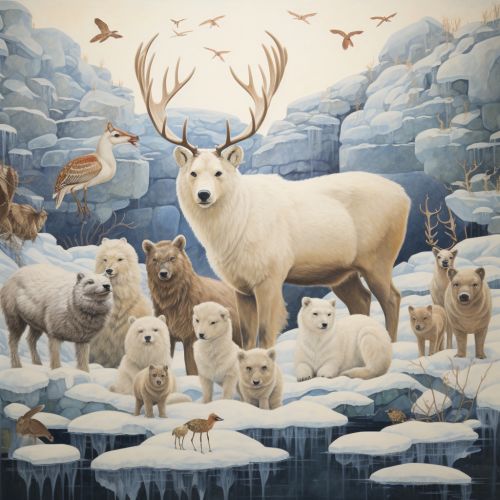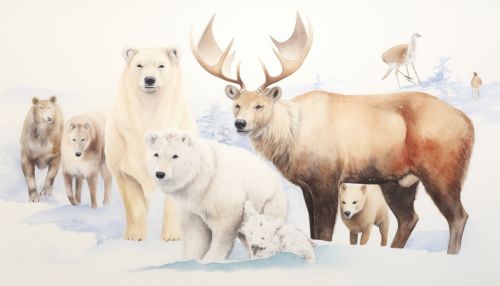Arctic Wildlife
Introduction
The Arctic is a polar region located at the northernmost part of the Earth. It consists of the Arctic Ocean and parts of Canada, Russia, Greenland, the United States, Norway, Sweden, Finland, and Iceland. The Arctic is known for its extreme conditions, with temperatures dropping below -50°C in winter. Despite these harsh conditions, a variety of wildlife species have adapted to survive and thrive in this unique environment. This article will delve into the fascinating world of Arctic wildlife, highlighting the adaptations and survival strategies of various species in this extreme environment.
Mammals
Polar Bears
Polar bears (Ursus maritimus) are one of the most iconic species of the Arctic. They are superbly adapted for survival in the Arctic, with features such as a thick layer of blubber for insulation, white fur for camouflage, and large, flat feet for efficient movement on ice and snow. Polar bears primarily feed on seals, which they hunt from the edge of sea ice.
Arctic Foxes
The Arctic fox (Vulpes lagopus) is another well-known mammal of the Arctic. These small foxes have a thick, warm fur that changes color with the seasons, providing effective camouflage. In winter, their fur is white to blend in with the snow, while in summer it turns brown or gray to match the tundra landscape.
Reindeer
Reindeer (Rangifer tarandus), also known as caribou in North America, are a species of deer native to the Arctic. They have unique adaptations such as large, wide hooves for walking on snow and a specialized nose that warms incoming cold air before it reaches the lungs.


Birds
Snowy Owls
The Snowy owl (Bubo scandiacus) is a large, white owl native to the Arctic. They are well adapted to life in the Arctic, with thick feathers for insulation and excellent hearing and vision for hunting in the harsh Arctic conditions.
Puffins
Puffins are small seabirds that breed in large colonies on coastal cliffs or offshore islands in the Arctic. They are excellent swimmers and divers, using their wings to 'fly' underwater while hunting for fish.
Marine Life
Beluga Whales
Beluga whales (Delphinapterus leucas) are small, white whales known for their distinctive bulbous forehead and high-pitched twitter. They are highly adapted to life in the Arctic, with a flexible neck that allows them to scan their surroundings and a thick layer of blubber for insulation.
Narwhals
The Narwhal (Monodon monoceros) is a medium-sized toothed whale famous for its long, spiral tusk. They are native to the Arctic and are known to navigate the icy waters with ease.
Adaptations to the Arctic Environment
Arctic wildlife has developed a range of adaptations to survive in the harsh Arctic environment. These include physical adaptations such as thick fur or feathers for insulation, white coloration for camouflage in the snow, and physiological adaptations such as the ability to slow down metabolism during the long, harsh winter.
Threats and Conservation
Arctic wildlife faces numerous threats, including climate change, pollution, and human activities such as hunting and habitat destruction. Climate change is particularly concerning as it leads to shrinking sea ice, which many Arctic species rely on for hunting and breeding. Conservation efforts are underway to protect the unique and fragile Arctic ecosystem and its wildlife.
